Volkswagen Golf Estate (2015-2020) Review
Written by Andrew Brady
Quick overview
Pros
- Highly competent all-round driving experience
- Impressive build quality
- Efficient engine range
Cons
- Not as good looking as the Golf hatch
- Commands a price premium
- Not the most spacious car in the class
Overall verdict on the Volkswagen Golf Estate
"In this Volkswagen Golf Estate review we are looking at the load-carrying version of what is generally regarded as the best hatchback in the class. It's worth noting that the Volkswagen Golf Estate doesn't off the most room or practicality in the class, but it makes up for this in other areas and unless space takes priority over everything else, this is probably the estate car you'll want to own."
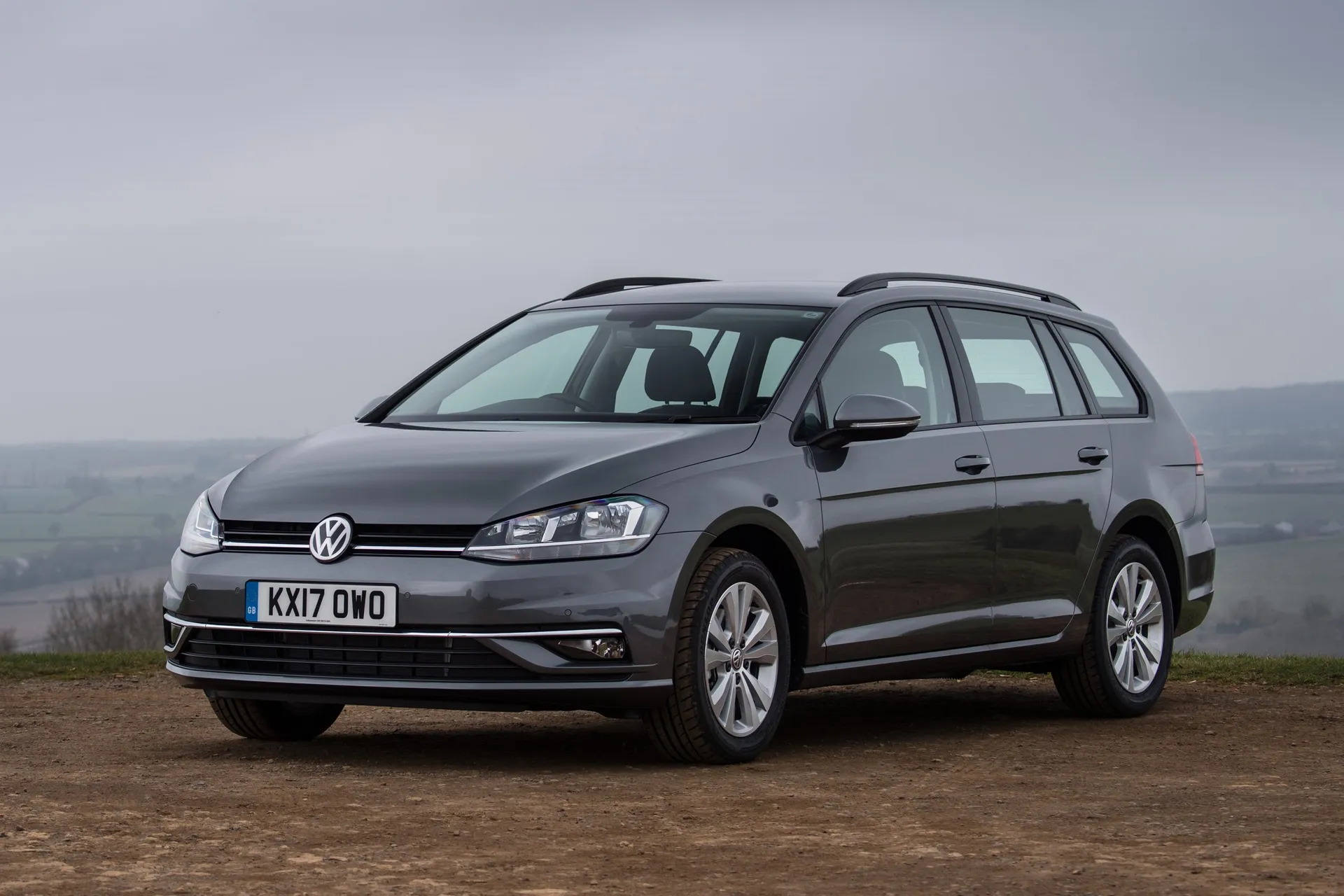
If you need a practical family car then the Golf Estate should be on your shortlist. All the things that make the Volkswagen Golf hatchback such an all-round gem are just as valid for the estate version. Perhaps the Golf Estate doesn’t look as sharp as the hatchback, but the same is true for many of its rivals. The slightly chiselled exterior doesn’t translate quite so well with the add-on of a chunky rear end, but you can still tell its a Golf and no one will think any less of you for it.
The quality of the cabin is first-class, with lots of high quality materials throughout. At the business end of things, you get a flat load floor with 605 litres. Flatten the rear seats and that cargo area extends to 1620 litres. The low boot opening makes it easy to load heavy or bulky items. There are useful storage compartments under the boot floor of odds and ends, too.
Because this is a Volkswagen there is a broad range of modern engines to choose from, with the blend of performance and fuel economy to suit a range of needs. The petrols are branded 'TSI', while the diesels carry the familiar 'TDI' moniker.
Kicking off the range is a 1.0 TSI turbocharged three-cylinder petrol with 115PS, with a larger capacity 1.5 TSI four-cylinder petrol available in 130 and 150PS guises - unless you go for the super-quick 2.0 TSI Golf Estate R, that’s where the petrol engine options stop.
On the diesel side there is a 1.6 TDI with 115PS and a 2.0 TDI with 150PS. The latter is also available in 184PS guise but only in the Volkswagen Golf Alltrack model that also comes with four-wheel-drive.
To drive, the Golf Estate brings all the excellence you get from the hatchback and delivers it directly to your hands and feet. Whether you’re just ambling through town, cruising along the motorway or hurrying along a country road, the Golf Estate is an able companion.
You might think that choosing the Golf Estate shows a lack of imagination, but there’s a reason that almost all of its competitors are trying to copy what it does. It’s so strong in almost every area that it has no real weak points, other than this level of excellence costs a little extra too.
If you're looking for the newer version, you need our Volkswagen Golf Estate review
Is the Volkswagen Golf Estate right for you?
One of the key appeals of the Golf Estate is that it's good at many things, so if you need a compact estate then there’s a good chance it will be able to do what you need it to. As a compact family car it’s a sensible and appealing choice, with good space for passengers and luggage as well as sound built quality.
If you are a business user you can load it up with stuff and enjoy the low fuel consumption, comfortable ride and overall refinement to eat up the miles with ease. Even if you are reluctantly trading in a regular hatchback you could still have a car that is good to drive but big enough to carry everything you want it to.
If you are on a cost-saving mission then the Golf may not be the car for you. It’s never going to be the cheapest car in the class and there are bigger and better-equipped rivals for much less money - and some of them are also from the Volkswagen Group.
What’s the best Volkswagen Golf Estate model/engine to choose?
You’re spoiled for choice when it comes to engine options, so it’s important to think about how you plan to use your Golf Estate. The basic 1.0 TSI petrol is actually a handy little unit, with plenty of poke for use around town but able enough should you head out onto the motorway. If you plan on more regular long journeys and still want petrol, the 1.5 TSI four-cylinder is available in 130PS and 150PS versions, both of which offer sprightly performance with decent economy.
On the diesel front, the 1.6 TDI unit is perfectly adequate but doesn’t feel as quick as the petrols, so if diesel is your first choice we’d suggest the 2.0 TDI unit instead. With 150PS and 340Nm of torque it’s as quick as you could reasonably need and is ideal for towing.
As for trim levels, the basic S model isn’t totally bereft of equipment, but the small step up to the SE model should be your reasonable minimum target - it adds Apple CarPlay and Android Auto, adaptive cruise control, front and rear parking sensors and lumbar adjustment for the front seats.
What other cars are similar to the Volkswagen Golf Estate?
The Golf Estate is essentially seen as the template from which all the other Volkswagen Group cars are spun off, so the latest Skoda Octavia Estate and SEAT Leon Estate are more than just similar, with the Skoda offering more space and better value while the Leon offers a sportier drive.
There’s also a stack of other estates spun off compact hatchbacks. The Ford Focus Estate, Vauxhall Astra Sports Tourer, Toyota Auris Sport Tourer, Peugeot 308 SW, Renault Megane Sport Tourer - that’s not even half of your options.
Comfort and design: Volkswagen Golf Estate interior
"Stepping inside the Golf Estate is a particularly welcoming experience, and not because it is an especially luxurious cabin."
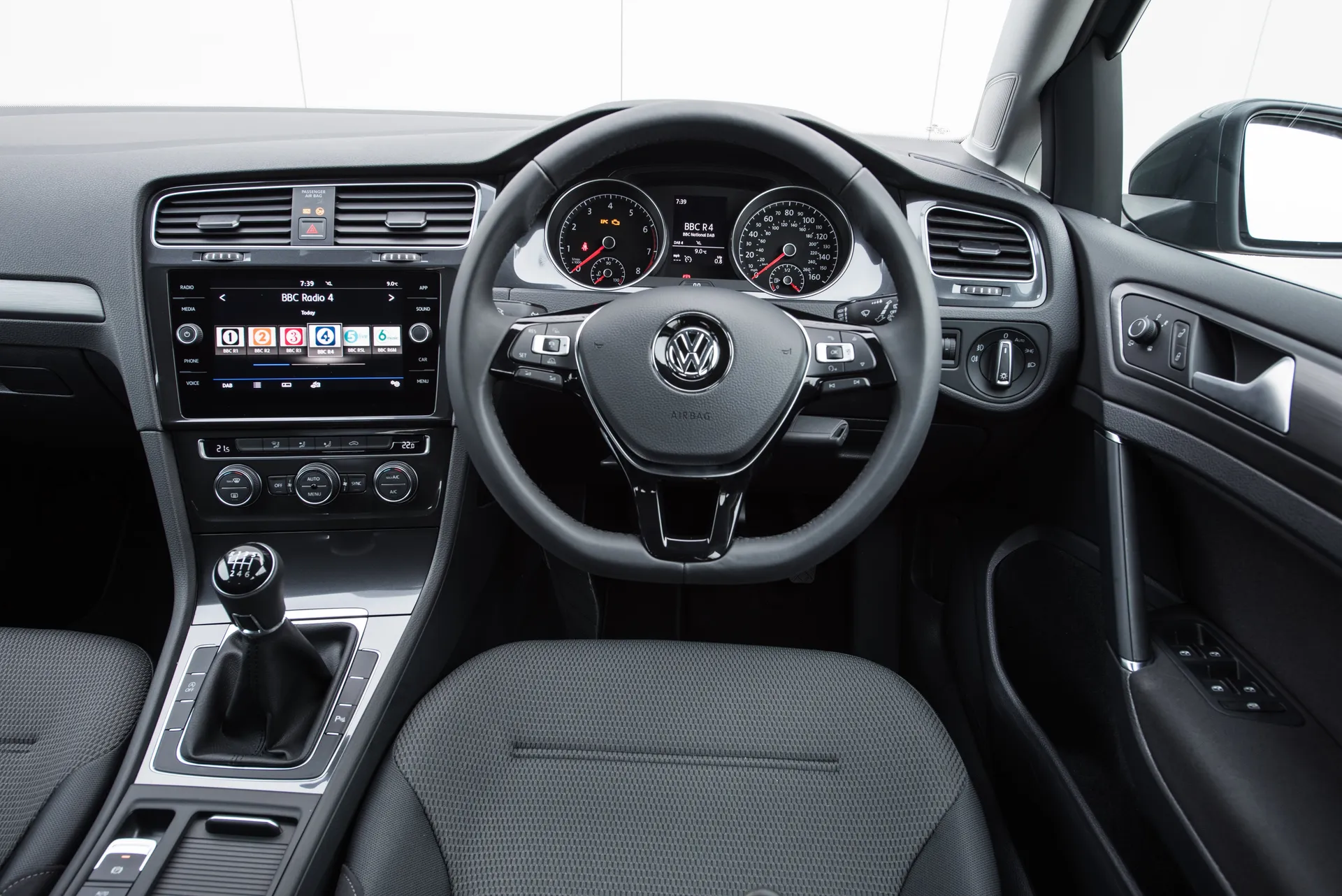
What you do get is an interior that instantly appears to be solidly built, sensibly designed and finished in smart materials. Getting comfortable behind the wheel should be possible for anyone.
Not only does the driver’s seat have a wide range of adjustment but it also offers plenty of support, and there’s seat height adjustment and lots of reach and rake adjustment with the steering wheel. The Golf Estate also offers excellent visibility - the dashboard doesn’t crowd out your view through the windscreen and the pillars are relatively slim (more so than on the hatchback in the case of the rear window pillar).
As for the design of the interior, if you were feeling cruel you could call it dull. It’s neither radical or especially flashy, but it is logically laid out and has a kind of obvious harmony where everything lines up beautifully. This is the kind of design that Volkswagen does very well - it’s understated and functional but still feels special somehow when you’re sat in it.
Another positive aspect is it’s easy to understand how everything works inside the Golf. You could change the temperature and put the radio on in a few seconds even if you’d never sat in one before, which says a lot about how it has been designed from the start to be straightforward.
Quality and finish
One of the key reasons that the Golf Estate and its stablemates have such a strong reputation is the quality on show. Volkswagen is one of the few brands that manages to effectively blur the lines between what is thought of as premium (like an Audi A4 Avant) and something that isn’t (every other compact estate).
You get a sense of this quality from the outside even before you get in - the gaps between the panels are always tight and when you grab the door handle to climb in it feels substantial, small things that send the right signals.
Once you are inside you’ll find that all of your contact points are covered in appealing materials, whether that’s the leather on the steering wheel, the cloth on the seat or the glass on the touchscreen. There’s plenty of soft touch plastic in here too, and although there are harder plastics in here they have been well-hidden so you won’t come across them too often.
You might be using your Golf Estate as a motorway hack or a family wagon, but the fact that the interior is so well thought through just helps a little every time you get behind the wheel.
Infotainment: Touchscreen, USB, nav and stereo in the Volkswagen Golf Estate
All versions of the Golf are fitted with an 8-inch touchscreen system with DAB, Bluetooth for telephone operation and audio streaming, with AUX and USB inputs for additional devices too.
On SE models and above you also get MirrorLink, Apple CarPlay and Android Auto so you can operate certain native apps direct from your smartphone. SE Nav includes navigation, additional online services and traffic sign recognition, while an optional system comes with a larger 9.2-inch screen and gesture control.
With most models getting essentially the same system it’s reassuring to know that you’re not missing out too much if you go for the cheapest S model. The screen works very well, with the glass front making it easy to slide your finger across the surface when required and all the graphics are nicely crisp and easy to read.
It makes sense to go for the SE model to add the smartphone connectivity so you can have navigation if required. The built-in system is good and works well but isn’t really worth the extra cash. The upgraded 9.2-inch system is impressive, but unless you have to have the flashiest version the standard system is good enough.
Space and practicality: Volkswagen Golf Estate boot space
You might think that the Golf Estate is all about the badge and the quality rather than the actual space, but you don’t have to spend long inside it to realise that it's one of the most spacious cars in its class.
Up front it is particularly roomy, which is good news if you happen to be at the taller end of the scale. Both front seats offer a broad range of adjustment - somehow sliding forwards and backwards on the seat rails with very little friction - including seat height adjustment and lumbar support on SE models upwards for driver and passenger, and the steering has a big range of rake and reach adjustment too.
There’s excellent headroom and similarly cavernous legroom, and has clearly been designed to accommodate those who may struggle to get comfortable. It’s also worth noting that there’s plenty of shoulder room too.
There’s excellent space in the rear too. It’s not quite as strong as in the front, and also not the most spacious car in the class back here (Skoda’s Octavia has the most rear seat space) but it’s still generous.
Headroom is good enough for adults over six feet tall, and there’s enough legroom for them too - this only really becomes an issue if you have two six-footers sat one behind the other. It’s best suited to two adults rather than three across the back row. Like many cars, the Golf’s centre seat is not as well-shaped or sized as the outer ones (although it is better than most) and some of the legroom is pinched by the back of the centre console.
The Golf Estate manages to offer all that passenger space while still offering a generous boot too. There’s 605 litres of space available with the rear seats in place - that’s only five fewer litres than you get in the Skoda Octavia - and 1620 litres with all the back seats folded, both of which are near the best in the class. It’s a useful space too - there’s a split-level boot floor so you can stash additional items out of sight and it gives a flat load space when you fold the rear seats.
The Volkswagen Golf Estate's dimensions are 4562mm long, 2027mm wide and 1481mm tall.
Handling and ride quality: What is the Volkswagen Golf Estate like to drive?
"It’s worth saying from the outset that the Golf Estate is not the best-handling car in the compact estate class - that honour goes to the Ford Focus Estate with a strong silver medal to the SEAT Leon ST. "
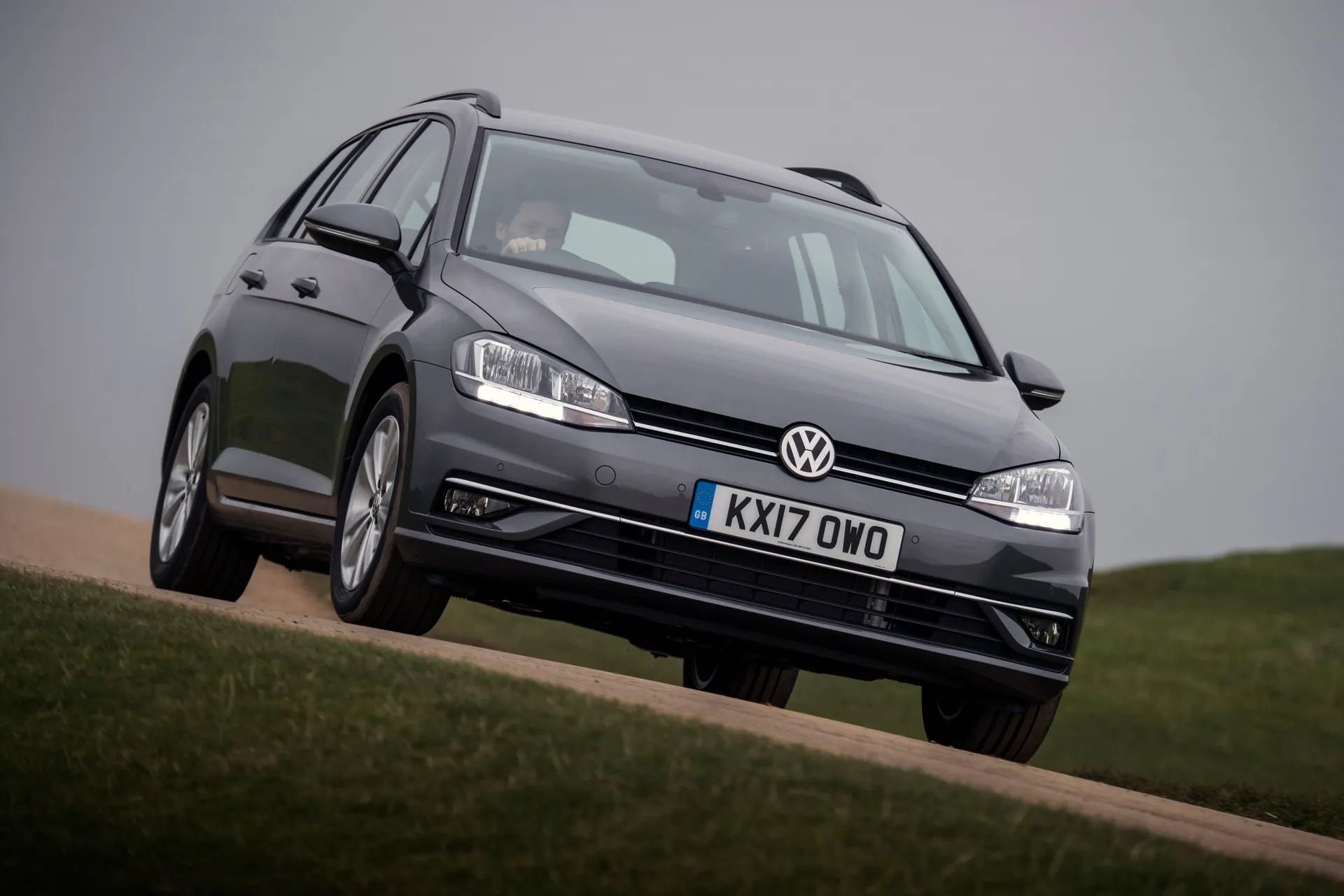
But what the Golf Estate manages to do is get within touching distance of both of those cars in terms of how well it handles. The Golf Estate is one of those cars that ends up impressing you by what it doesn’t do. You may not even notice it at first, but drive along a typical urban road and before long you’ll realise it has been soaking up all those road imperfections without a fuss, which is not only exactly how you’d want it to be but it also helps to take a little strain out of every journey.
It’s also worth mentioning that Golf Estates have a different suspension setup depending on the engine you choose, with 1.0 TSIs and 1.6 TDIs having a less sophisticated torsion beam at the rear. Most people wouldn’t be able to tell the difference, but if having the best-handling and best-riding version of the Golf Estate matters to you, pick one of the spicier engines.
As for the handling, the Golf Estate manages to make steering through a bend at speed a very natural process. The steering may be electrically assisted but it offers excellent feel for the road surface and what the tyres are up to, and the weighting of it is just about spot-on too, so you feel very much in control. There’s plenty of grip, balance and security.
What engines and gearboxes are available in the Volkswagen Golf Estate?
Not only does the Golf Estate have a broad engine range, they are all quite modern units with good efficiency, which means you can make the choice you need based on your budget with confidence.
The basic 1.0 TSI engine is certainly no poor relation either. With 110PS it is never going to be a rocketship and loading it up with passengers and heavy luggage might seem a bit cruel, but if you’re going to spend most of your time in town it’s peppy, frugal and quiet.
For more mixed use we would suggest one of the bigger 1.5 TSI petrol engines - both the 130 and 150PS versions have more torque at low-revs and are happier at motorway speeds or carrying heavier loads. There’s enough performance there to make them fun to drive too, but even then they are efficient and capable of low fuel consumption.
On the diesel front, the basic 1.6 TDI unit offers reasonable acceleration and refinement as well as the expected ultra-low fuel consumption, but you wouldn’t want to be in a hurry if you had this pulling you along. If you want a diesel then the 2.0 TDI unit is the best bet with 150PS.
The six-speed manual gearbox that comes with most engine options is slick and easy to use, while the DSG automatic is also smooth-operating for those who want a two-pedal option.
Refinement and noise levels
The other central pillar of the Golf’s reputation is that it's a refined car. The engine range certainly helps the cause. Even the least refined of the engine options - in particular the 1.6 TDI - still rarely intrudes into the cabin thanks to the excellent insulation. With the better engine options you only really notice any noise when they are extended, which is a great help for combatting driver fatigue.
It’s a similar story in terms of road road noise, which is almost entirely absent at lower speeds and still well controlled even on motorways. Even on poor road surfaces, what little rumble there is appears quite distant, and it’s more like you’re being informed about the surface rather than actually bothered by it.
Wind noise is also well controlled, so even at motorway speeds there is a minor rush of wind rather than anything that is likely to bother you. It’s another contributing factor that makes the Golf such a relaxing car to drive, and leaves you feeling less tired at the end of your journey.
Safety equipment: How safe is the Volkswagen Golf Estate?
The Volkswagen Golf was crash tested by Euro NCAP in 2012, and while it was the hatchback version that was tested the organisation decreed that the results could also be applied to the Golf Estate. Euro NCAP awarded the Golf an impressive five-star rating. Its most impressive score was 94% for adult protection, alongside a score of 89% for child protection. Pedestrian mitigation was given a 66% rating, while safety assist was recorded at 71%.
As standard, all Volkswagen Golfs are fitted with front airbags including a knee airbag for the driver, side chest and pelvis airbags for the front seat passengers and curtain airbags for front and rear passengers.
Seat belt pre-tensioners are fitted to both front seats and are optional in the rear, with seat belt load limiters standard for all seats. ISOFIX child seat mounting points are fitted in the outer rear seats as well as an airbag deactivation switch for the front passenger seat, with ESC as standard on all models.
As tested in 2012 the Golf had the option of speed assistance, but the standard specification was increased latterly to include automatic emergency braking on SE models and above, while traffic jam assist is available as part of an option pack on SE Nav models and above that are fitted with an automatic gearbox.
MPG and fuel costs: What does a Volkswagen Golf Estate cost to run?
"With a range of efficient engines and slick aerodynamics it’s no surprise that the Golf Estate can deliver impressive fuel consumption for a car this spacious."
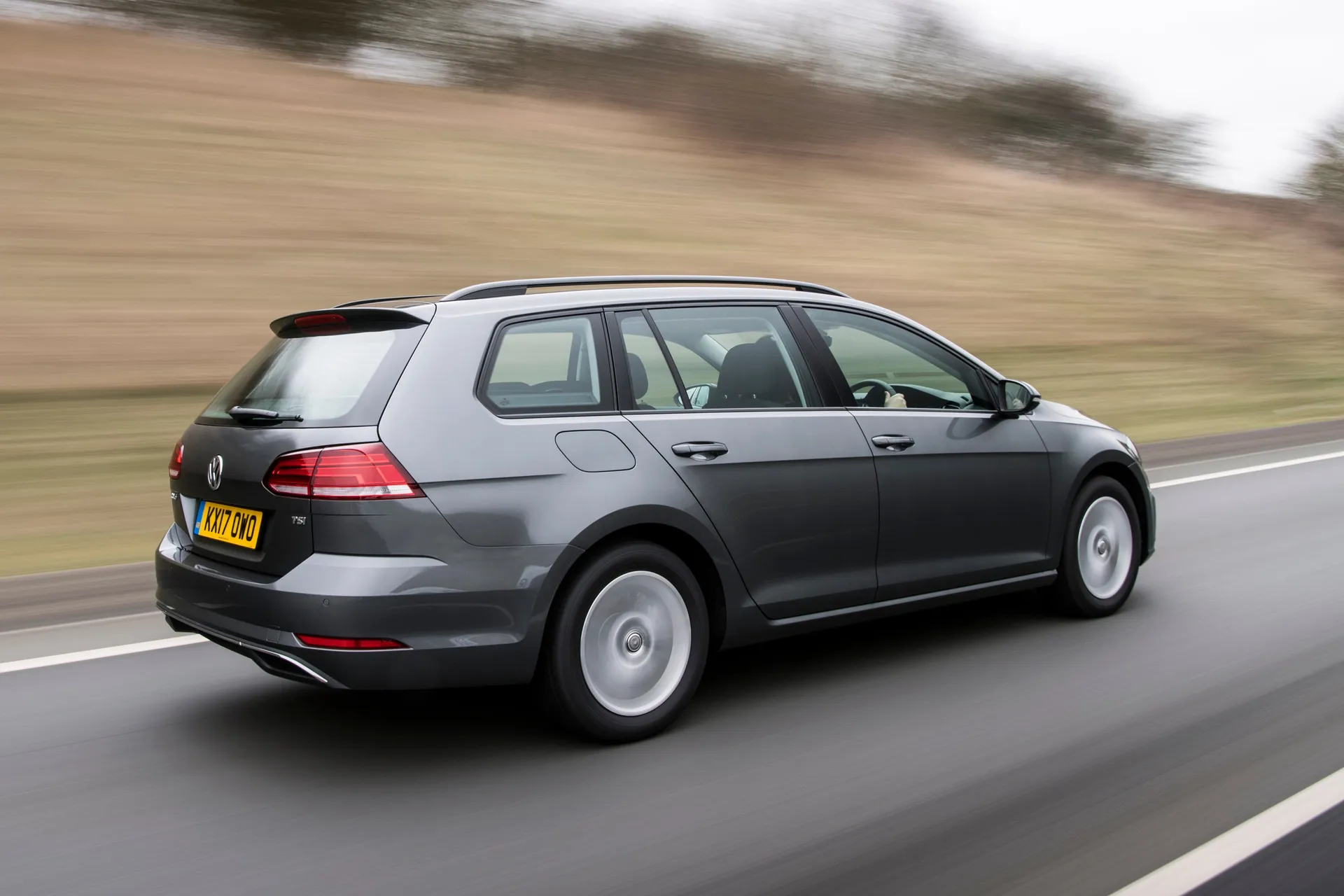
The 1.0 TSI petrol has a claimed combined fuel consumption figure of up to 50.4mpg (49.6mpg for the S model), which should mean real-world figures in the low 40s should be easy. The 1.5 TSI petrol is also strong with a figure of 49.6mpg for both 130PS and 150PS versions, so you can choose the more powerful version without paying for it at the pumps.
As for the diesels, the 2.0 TDI has a claimed figure of up to 54.3mpg and up to 56.5mpg for the most economical 1.6 TDI, so you may be able to get 50mpg in the real world on either model.
How reliable is a Volkswagen Golf?
The Volkswagen Golf scored a solid 9.20 out of 10 for reliability in the HonestJohn.co.uk Satisfaction Survey, which is one of the better scores for the Volkswagen range and is competitive with rivals. This Golf doesn't quite have the cast-iron reliability of older versions but it is still a solid machine.
As a brand Volkswagen was placed 10th out of 30 manufacturers in the same survey, ahead of SEAT and Audi stablemates, although a few places behind Skoda.
Insurance groups and costs
As well as low fuel bills you should also find that the Golf Estate can keep your insurance premiums down too. Go for a 1.0 TSI petrol models in S trim and it gets into group 13 - earlier 1.2 TSI used models are lowly still in group 7, while the 1.6 TDI is also in group 13. A more flashy 2.0 TDI in SE trim is still only group 18, and you won’t find a Golf Estate with a group higher than this until you get into the performance versions.
VED car tax: What is the annual road tax on a Volkswagen Golf Estate?
The Golf Estate straddles the big April 2017 VED changes, so how old your car is as well as the engine you choose will affect your annual bill. Buy a new Golf Estate, or one registered from April 2017 onwards and you can expect to pay a consistent rate of £165 per year largely irrespective of which engine and trim level you go for.
It’s a bit different for cars registered before April 2017 however. The 1.0 TSI petrol engine attracts a charge of just £20 per year if you go for a car registered before 31 March 2017, while some BlueMotion models attract the zero rate. It’s a similar story for the two diesel engine options too, which pick up either the £20 or £30 rate depending on the specification. So if you plan to buy used, consider the age of the vehicle as you could make a substantial saving.
How much should you be paying for a used Volkswagen Golf Estate?
"The Golf in all its forms is a very popular car, and having been on sale for several years there are hundreds of examples for sale. This means you can be quite picky on condition and spec when buying used."
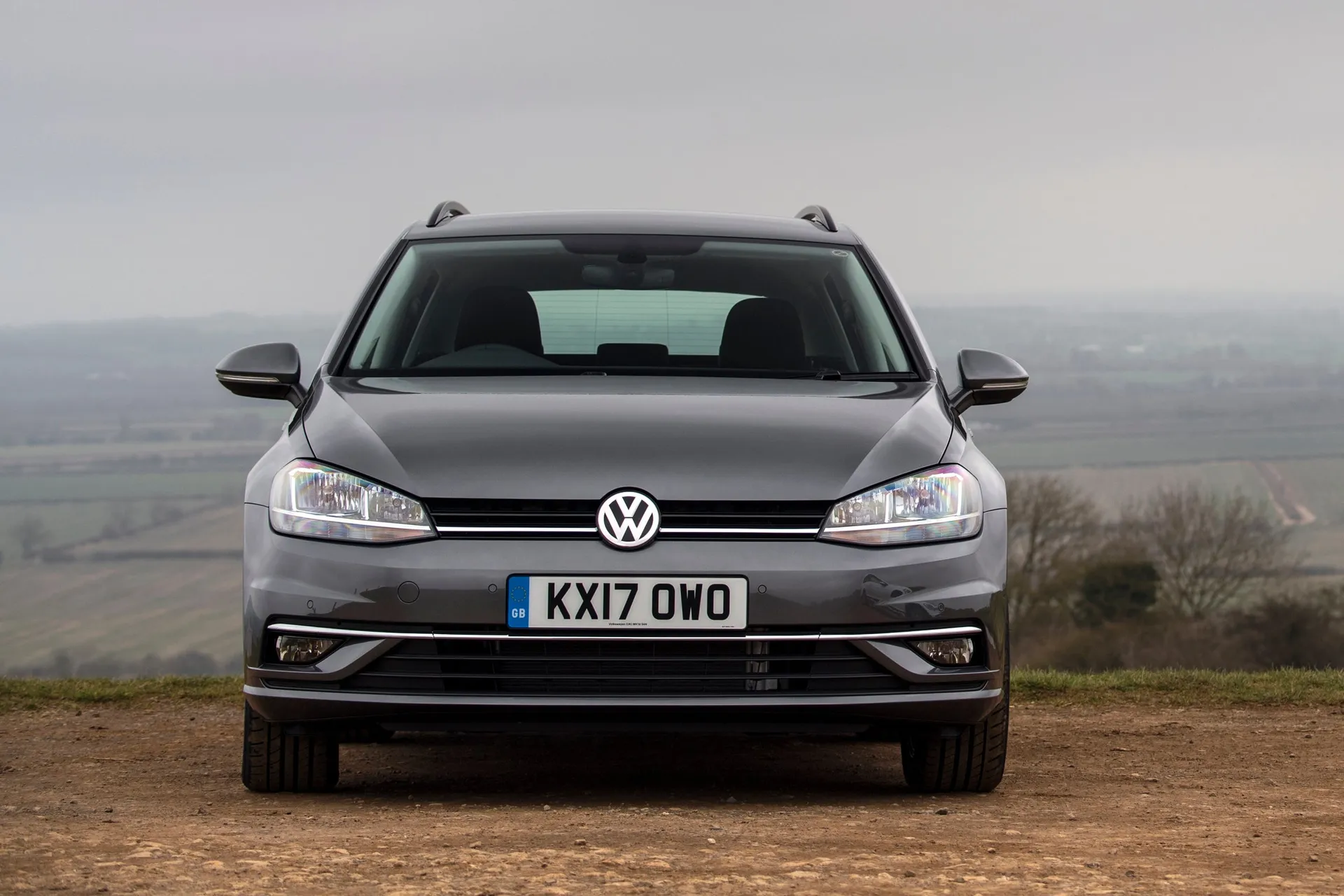
On newer models, there are lots of examples of low mileage and pre-registered Golf Estates so you can get a bargain. A quick search of the classifieds turned up a 2020 1.5 TSI Evo in Match Edition spec with only 15,000 miles for £23,000.
As for older cars, the earliest cars are now relatively cheap to buy and you still get plenty to choose from. We found a 2015 1.4 TSI in SE trim with 60,000 miles on the clock for £10,000, or a 1.6 TDI from 2018 in SE trim with 75,000 miles for just under £11,500.
Trim levels and standard equipment
The Volkswagen Golf Estate in S trim comes with seven airbags, including a driver’s knee airbag, five three-point seatbelts, ABS with ESP, XDS electronic differential lock and Isofix preparation for two rear child seats, an 8-inch colour touchscreen, DAB, USB and AUX input, Bluetooth and audio streaming.
Volkswagen Golf Estate SE/Match trim adds alloy wheels, lumbar adjustment for the front seats, automatic wipers, touchscreen navigation, Apple CarPlay and Android Auto, adaptive cruise control, automatic lights, City Emergency Braking, and a leather-trimmed gear lever
Volkswagen Golf Estate GT comes with 17-inch alloy wheels, lowered sports suspension, front fog lights and air intakes with chrome surrounds, gloss black decorative inserts, Alcantara and cloth sports seats, LED reading lights, ambient lighting in the doors and centre console, electrically foldable door mirrors with puddle lights plus front and rear parking sensors.
Ask the heycar experts: common questions
Is a Golf Estate longer than a Golf hatchback?
Are Volkswagen Golf Estates good?
How much bigger is a Golf Estate?
Get our latest advice, news and offers
Keep me updated by email with the latest advice, news and offers from heycar.
By submitting you agree to our privacy policy



